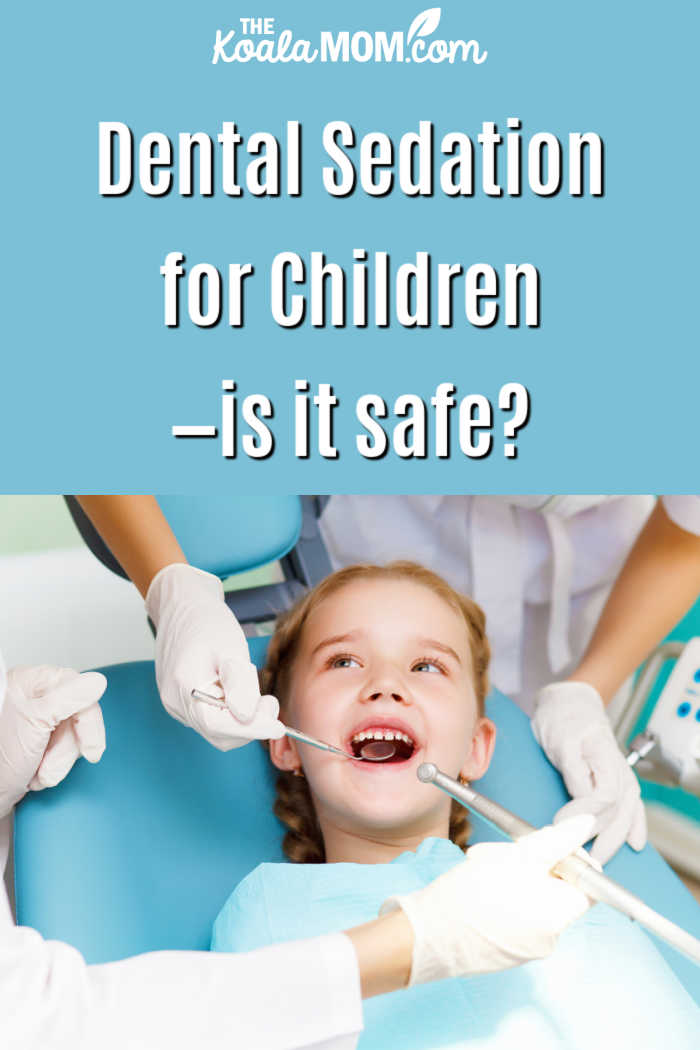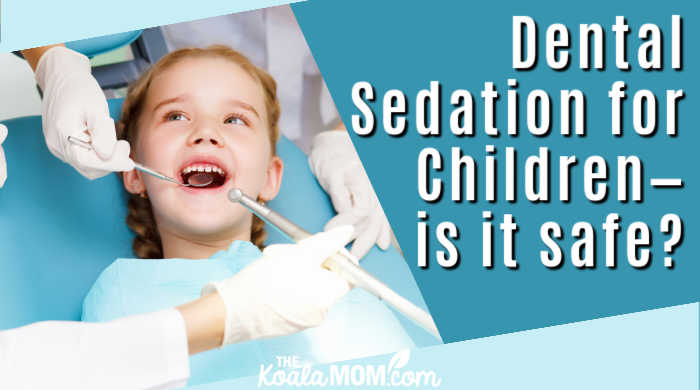Oral health problems can happen at any age, and unfortunately even small children may require dental work from time to time. To complicate matters, children usually aren’t very good at dealing with pain or even being seated in the dentist’s chair for extended periods of time. Most issues that involve the need for invasive treatment don’t affect young children and baby teeth are essentially expendable. However, for those rare occasions where more involved dental work needs to happen, many parents will be asking their dentist about anesthesia or sedation for their child.
What does dental sedation involve, what are the options and is it safe? Let’s discuss these important aspects of your child’s oral health.

What are the types of pediatric dental sedation?
First things first. What are the types of anesthesia and sedation that can be used on children? Knowing your options is step one in making the right choice.
Local Anesthesia: Your children’s dentist may need to use a local anesthesia to numb an area of your child’s mouth prior to certain procedures. Sometimes the anesthesia is a gel that is administered via a swab, but more often it will be injected using a tiny needle. The needle will hurt but the pain is short lived and necessary to allow proper dental care to continue. The dentist may use gel to numb the area and then inject more anesthesia via the needle. Most local anesthetic will last between 2-3 hours after which the numb feeling will gradually decrease until it’s gone.
Several of my kids have required this level of anesthesia to extract stubborn baby teeth that weren’t falling out on their own. The entire procedure was quick and fairly painless for my kids; waiting for the numbing to take effect was the longest part. They usually find the numbing in their mouths amusing, but we try to make sure they don’t eat anything until the numbing has subsided as otherwise they may bite their mouth or tongue unawares.
Nitrous Oxide: Also known as “laughing gas”, you’ve probably heard of this type of anesthetic or sedation method already. It’s commonly used for wisdom tooth extractions as it blocks pain and isn’t a total sleep sedation method. A nasal hood is placed over your child’s mouth and nose forcing them to breathe a carefully regulated nitrous oxide gas and oxygen mixture. Your child breathes normally, and the effects begin within a few minutes. Your child will experience happy or euphoric feelings and their physical sensations like touch, hearing and especially pain will be suppressed.
Sedation: There are several levels of sedation used in a dentist’s office – from mild to deep – where the latter allows the patient to remain awake and able to interact, albeit without pain. Deep sedation on the other hand is usually administered via intravenous injection (IV) and will put the patient to sleep for the treatment.
For this method, an anesthesiologist is required to administer the sedative and monitor the progress. Mild sedation is very safe for children because they remain awake and functional. Deep sedation involves more risk and requires their heart rate, blood pressure and breathing to be carefully monitored. This requires a specially equipped dental office or hospital and is generally only used if absolutely necessary (don’t worry).
One of my daughters had several cavities, including one deep, painful cavity, and required mild sedation at a pediatric dentist to deal with it. Our local dentist recommended this as he wanted visiting the dentist to remain a happy, positive experience for the kids. The pediatric dentists had more experience with treating kids dental needs and, since Jade was half-asleep for most of the procedure, she barely remembers it.
Is sedation dentistry safe for children?
Any dental procedure can be worrisome when it comes to your children. Even something like removing a tooth or fixing a cavity can be cause for concern. However, modern dental techniques have made these visits to a children’s dentist very safe.
Something like a local anesthetic doesn’t pose any health risk to your child, but the needle typically used to administer the numbing agent will hurt briefly. There are no concerns here (unless your child has a fear of needles, which you’ll want to discuss with your dentist).
Nitrous oxide dentistry poses virtually no risk and is the first choice of children’s dentists who require the use of a sedation method. It works great to eliminate pain, the level of sedation can be easily regulated, there are no painful needles to endure, and your child stays awake for the duration.
Mild to deep sedation, also known as pediatric sleep dentistry, are also very safe for kids. They are used mainly when your child is required to lie still for extended periods of time or if dental work could be a traumatizing experience for your child. Sleep dentistry requires the help of an anesthesiologist to make sure everything is done correctly, and to provide medical aid in case something does happen.

Of course, prevention is always the best medicine. Teach your kids to brush their teeth thoroughly at least once and preferably twice a day. Regular dentist visits also help ensure that any problems are caught early and can be treated quickly (before more invasive procedures are necessary). It also helps to develop a relationship with your dentist, as then they know your child, your child is familiar with the dentist, and you feel more comfortable asking questions or expressing concerns.
Pediatric sedation dentistry is a practice that is well established and proven safe for young children. It is also often recommended for children who are overly fearful of visiting the dentist. As you know, dental checkups or other procedures are necessary for long term oral health, so it’s important that your child is able to visit the dentist for treatment. Oral sedation prevents your child from experiencing pain and reduces risks posed by elevated stress levels caused by dental procedures. It also allows your pediatric dentist to do their job quickly and effectively.
If you have concerns about dental sedation, it is best to reach out to dental experts like this professional dentist in Highlands Ranch or one near you so they can clarify any questions that you have.
Photo credit: Depositphotos.

No Responses Yet